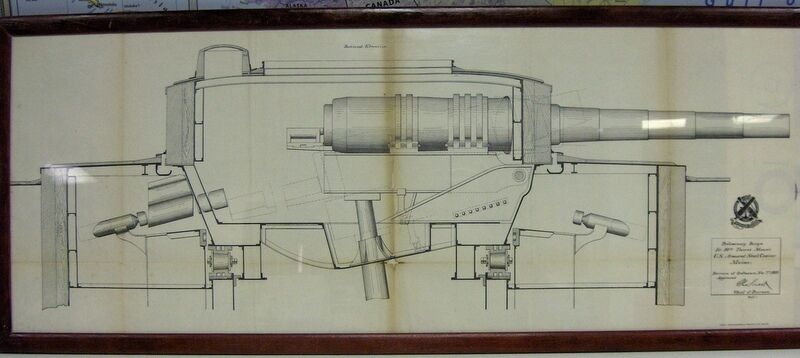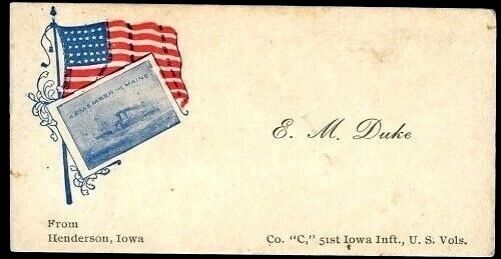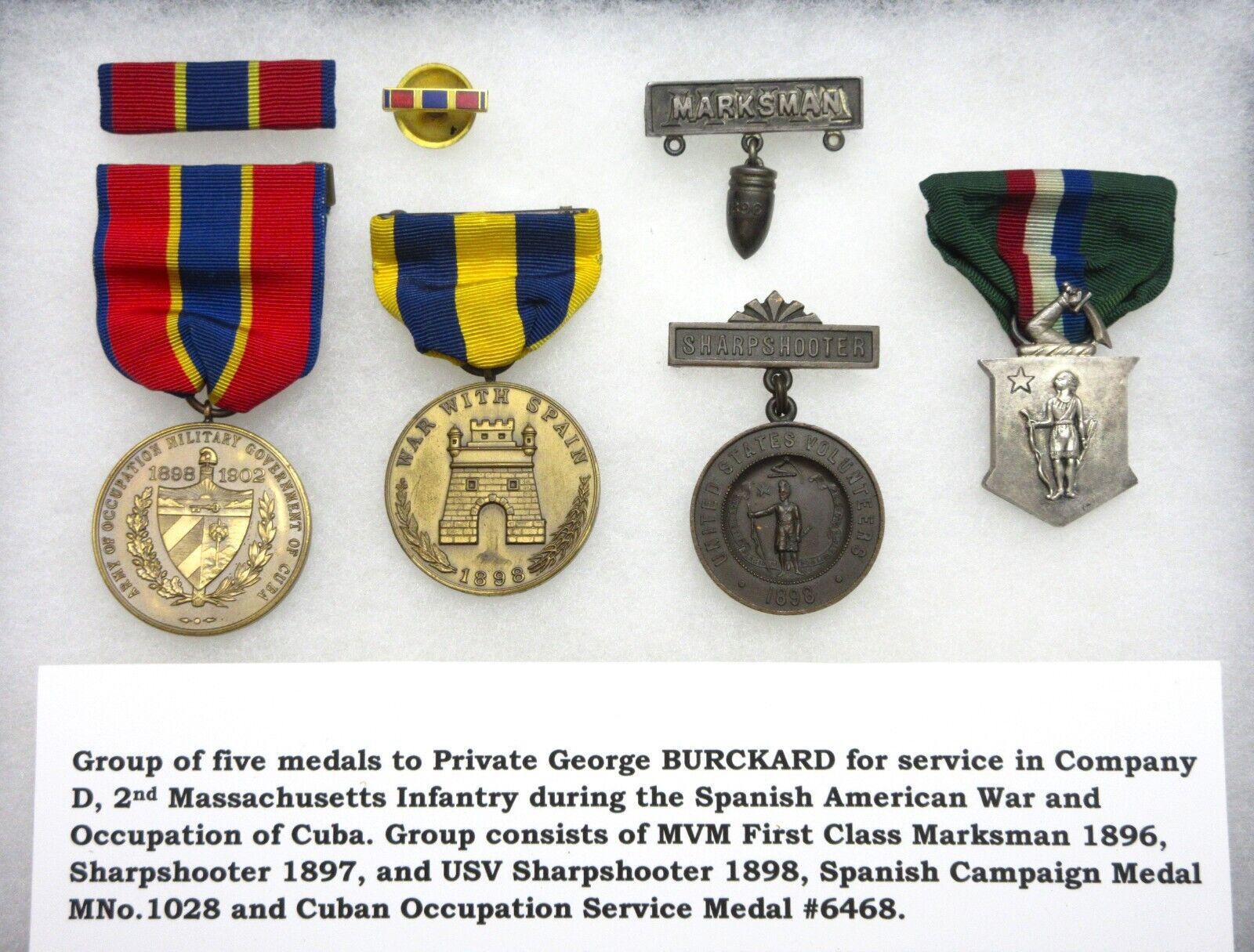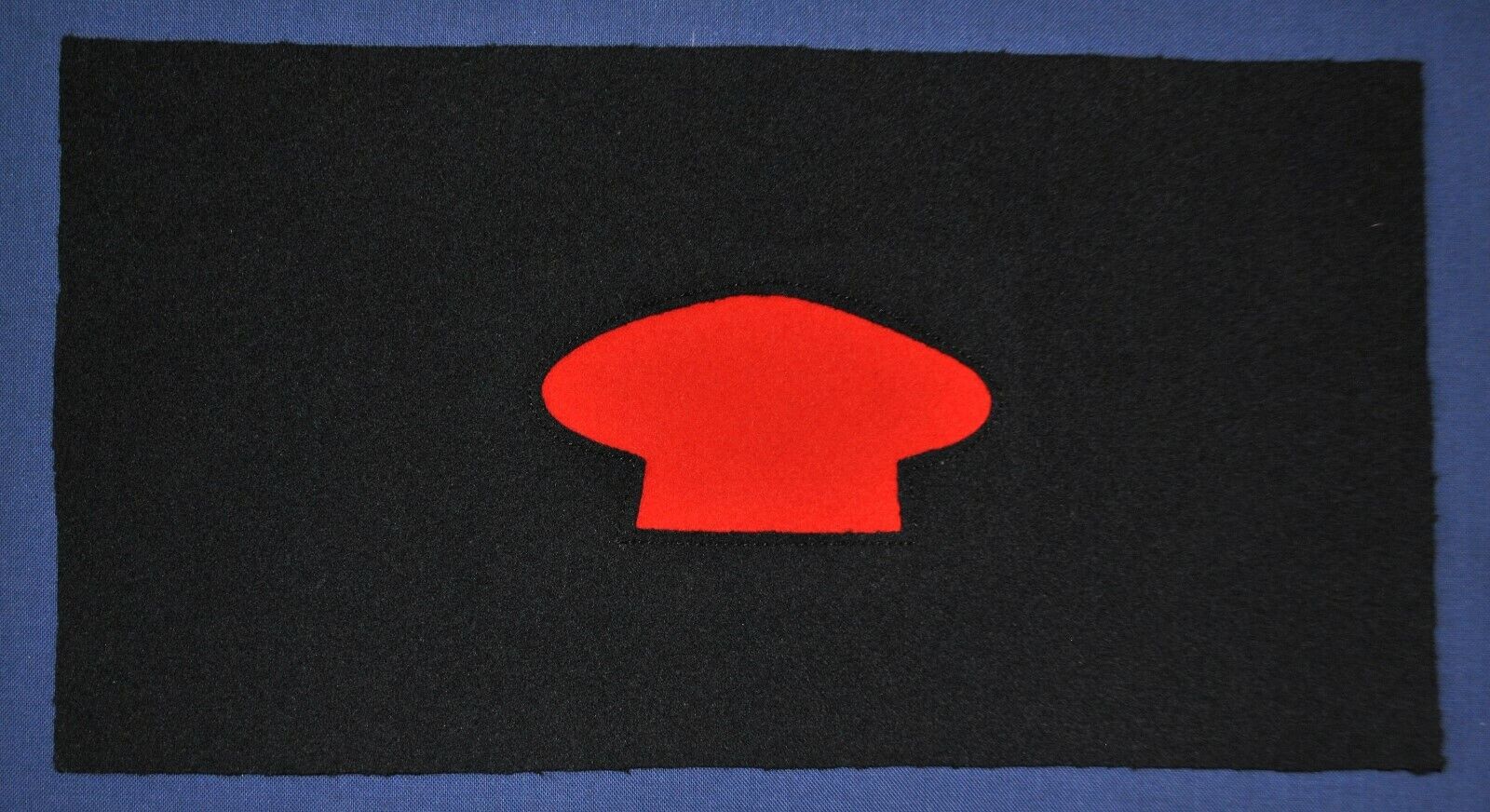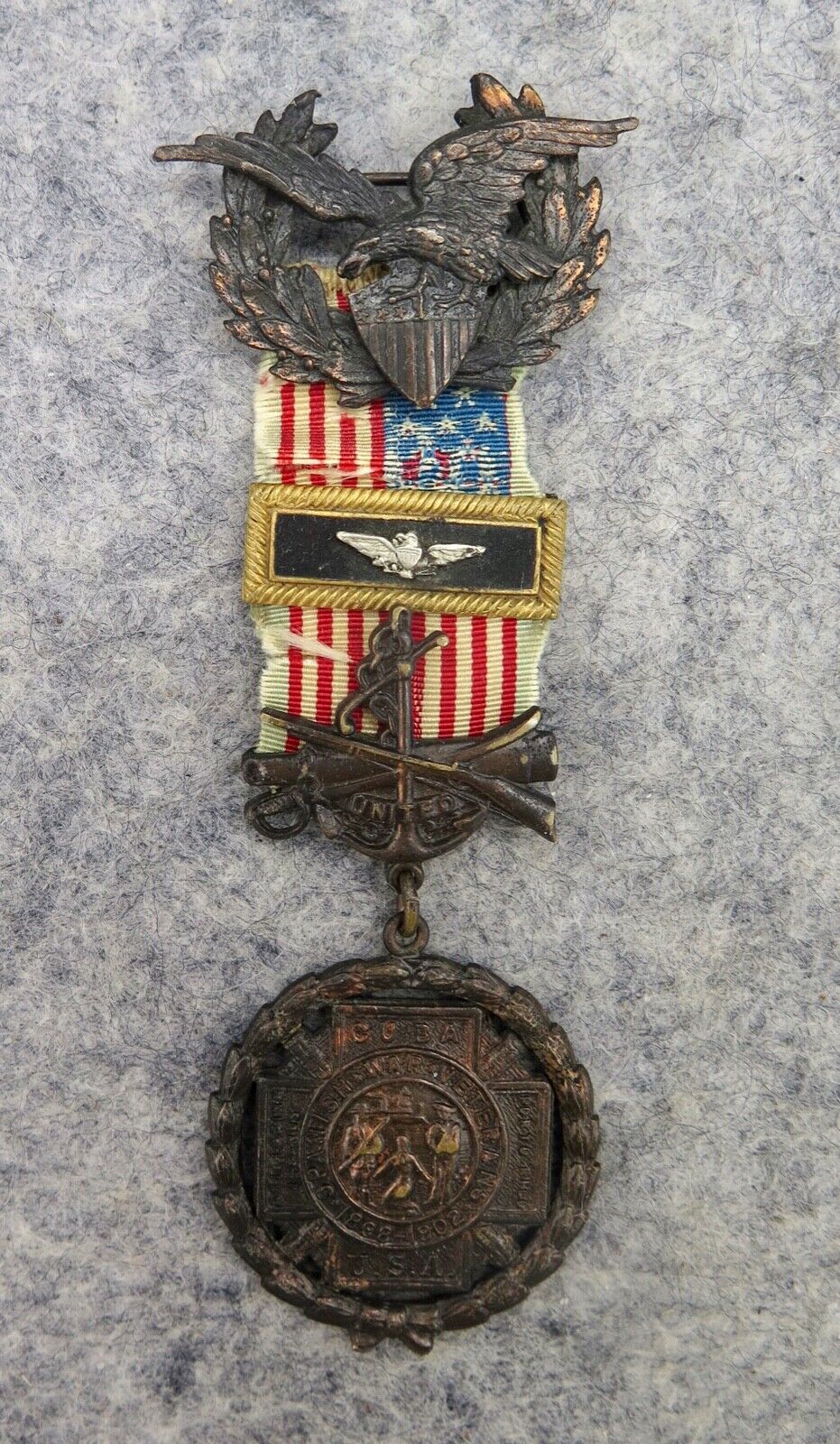-40%
ORIGINAL PRELIMINARY DESIGNS OF The U.S.S. MAINE 10" GUNS & Turret Mounts 1889
$ 4749.35
- Description
- Size Guide
Description
ORIGINAL PRELIMINARY DESIGNS OF The U.S.S. MAINE 10" GUNS & Turret Mounts 1889History and Provenance:
T
he
first Armored Cruiser
to be ordered by the United States
Navy
was the
U.S.S. MAINE.
T
he U.S.S. Maine was the first US Armored Cruiser to be launched however she was later declassified as a second class battleship because she was already out of date by the time she was near ready to be commissioned. Due to this by correct terminology and history, the first US Battleship to be commissioned was actually the USS TEXAS.
Maine
'
s main armament consisted of four 10=Inch (254 mm)/ 30 Caliber Mark II guns, which had a maximum elevation of 15° and could depress to −3°. Ninety rounds per gun were carried. The ten-inch guns fired a 510 pounds (231 kg) shell at a muzzle velocity of 2,000 feet per second (610 m/s) to a range of 20,000 yards (18,000 m) at maximum elevation. These guns were mounted in twin hydraulically powered Mark 3 turrets to starboard and the aft turret to port.
Battleship Maine
by Frederick Nelson Atwood. Note the fore 10-inch turret
The 10" guns were initially to be mounted in open barbettes (the C & R proposal blueprint shows them as such). During
Maine
'
s extended construction, the development of rapid-fire intermediate-caliber guns, which could fire high-explosive shells, became a serious threat and the navy redesigned
Maine
with enclosed turrets. Because of the corresponding weight increase, the turrets were mounted one deck lower than planned originally. Even with this modification, the main guns were high enough to fire unobstructed for 180° on one side and 64° on the other side. They could also be loaded at any angle of train; initially the main guns of
Texas
, by comparison, with external rammers, could be loaded only when trained on the centerline or directly abeam, a common feature in battleships built before 1890. However, by 1897,
Texas
'
turrets had been modified with internal rammers to permit much faster reloading.
The
en echelon
arrangement proved problematic. Because
Maine
'
s turrets were not counterbalanced, she heeled over if both were pointed in the same direction, which reduced the range of the guns. Also, cross-deck firing damaged her deck and superstructure significantly due to the vacuum from passing shells. Because of this, and the potential for undue hull stress if the main guns were fired end-on, the
en echelon
arrangement was not used in U.S. Navy designs after
Maine
and
Texas
.
F
or auction is the Historical and original Photo-litho dated November 7th, 1889.
This IS NOT A COPY that was produced in any book. There were very few rpinted to be used for
The lithograph measures
11.5" x 29" and was produced by
Issac Friedenwald Co. of Baltimore Maryland dated
November 7th, 1889
while the USS Maine was bein
g built. This is the ONLY
original Photo-litho known elevation of its type for the 10" Gun Turrets dated November 7th, 1889.
This was used by Officers for training of new cadets at the US Naval Academy between 1889 and perhaps up to several years later, as late ad 1892.
Issac Friedenwald Co., was a Publisher and Lithographer in Baltimore Maryland. The company was known for quality United States Naval Academy books, US Army, manuscripts documents and also for Photo Lithographs from as early as 1884 to as late as 1892. In 1893, the company
discontinued
publishing under the Isaac Friedenwald Co. name and became known as the Friedenwald Company. Therefore this lithograph could not have been printed after 1892 or after the USS MAINE was sunk.
Due to the size of this document, this document positively did not come out of any diminutive book produced by the Issac Fredenwald Co. prior to 1892 nor was it used as propaganda or as a souvenir at a later date. Anyone that says otherwise has not done any research or is still learning how to be an expert.
This is an original photo lithograph produced for the U.S. Navy and used by the U.S. Navy and the U.S. Navy Military Academy that was used in construction of the armament for the U.S.S. Maine.
Fact: The Propelling Machinery and General Arrangements of the Engine room and Shaft alleys for the USS MAINE were approved by U.S.N. Engineer by Chief George W. Mellville on December 5th, 1887. Nearly two years later, Her 10" GUN TURRETS and MOUNTS were approved by U.S.N. Ordinance Bureau Chief M. Sicard (Montgomery Sicard) on November 7th, 1889. She was launched November 18th, 1890.
These are the original preliminary designs and blueprints for the U.S.S. MAINE 10" Gun Turrets! THERE ARE NO OTHER! THIS IS THE ONLY SURVIVING preliminary design.
More History and Provenance:
In 1881, Commander Montgomery Sicard became the Chief of Bureau of Ordnance for the United States Navy. He remained USN Chief of Bureau until 1890. In the period between 1881-1890 he was responsible for the Armament of all USN ships predating the Spanish American War. Before finalization and manufacture of armament, the Bureau Chief approved Photo-Litho Preliminary Designs to be provided by the Issac Friedenwald Co. of Baltimore Maryland while the Maine was bein
g
built.
Prior to launch of the USS MAINE, Issac Friedenwald Co. contracted with the USN Bureau Of Ordnance in 1889 to produce a very small number of USN approved Photo-Lithos to be used by officers at the USN and the Naval
Academy
. These included the Preliminary Designs of various ordinance for the United States Navy including the Gun Turrets for the U.S.S. Maine. The earliest known use of Photo-Lithos printed under Private Contract with ISSAC FRIEDENWALD for the USN Bureau Of Ordnance were at various dates beginning in March of 1889 and continued until November of 1889. As of this date, there are currently not any similar or known examples photo/lithos of this size to have been printed at any earlier or later date. All were approved by W. Sicard, Chief of Bureau
. Most of
the
Bureau of Ordinance
Lithos
will bear the facsimile signature of W. Sicard and the Seal of the USN Bureau of Ordinance
.
The Bureau of Steam Engineering was under the command of Commodore George W. Melville. None of the Bureau of Steam Engineering Photo Lithos were marked with a private company’s name and since these were made at the same time, apparently the Bureau of Ordinance and the Engineering Departments used different lithographers. This is logical since the designs were printed at the command of the Bureau Chiefs in the same period. To the best of my knowledge and after over 15 years of research,
I am not aware that
there was any requirement at the time by the USN as to who would provide the services for these small jobs. Common sense indicates
i
t would have been quite costly and time consuming to have printed small run documents through any of the government printing offices or agencies. Small jobs are known to have been produced from the private sectors which is evidenced by these photo lithos marked with the Issac Freidenwald name.
The following is additional proof and provenance with a list of nine known large size Photo-Lithos in private collector hands printed under Private Contract with ISSAC FRIEDENWALD for the UNITED STATES NAVY in 1889
.
Preliminary Designs of For 10in. Turret Mount for -Monitors -Amphitrite- Monadnock and Class. Bureau of Ordnance Oct. 28, 1889 Approved W. Sicard Chief of Bureau. ISSAC FRIEDENWALD, PHOTO-LITH. BALTO
SECTIONAL ELEVATION (Side View) 11.5 x 11.75 Green Stamp Serial #7
Preliminary Designs of For 10in. Turret Mount for -Monitors -Amphitrite- Monadnock and Class. Bureau of Ordnance Oct. 28, 1889 Approved W. Sicard Chief of Bureau. ISSAC FRIEDENWALD, PHOTO-LITH. BALTO
Plan View (Top View) 10” x 12” Green Stamp Serial #8
Preliminary Designs of For 10in. Turret Mount U.S. Armored Steel Cruiser MAINE. Bureau of Ordnance Nov. 7, 1889. Approved W. Sicard Chief of Bureau. ISSAC FRIEDENWALD, PHOTO-LITH. BALTO 11.5” x 29” No stamp or serial #
Preliminary Designs of For 10 in. Turret Mount U.S. Armored Steel Cruiser MAINE. Bureau of Ordnance Nov. 7, 1889. Approved W. Sicard Chief of Bureau. ISSAC FRIEDENWALD, PHOTO-LITH. BALTO 12“ x 16“ (SOLD TO PRIVATE COLLECTOR)
RECOIL-MOUNT FOR 6 Pd. HOTCHKIS GUN Approved W. Sicard Chief of Bureau. Ca. 1889 FRIEDENWALD, PHOTO-LITH. BALTO 9” x 10” Green Stamp Serial #17
RECOIL-MOUNT FOR 3 Pdr. HOTCHKIS GUN Ca. 1889
FRIEDENWALD, PHOTO-LITH. BALTO 9” x 14.25 Green Stamp Serial #18
6 in. SHRAPNEL. US NAVY BUREAU OF ORDINANCE Mar. 26, 1889
ISSAC FRIEDENWALD, PHOTO-LITH. BALTO 5” x 9” Green Stamp Serial #19
4 in. CAST IRON SHELL US NAVY BUREAU OF ORDINANCE May 17, 1889 ISSAC FRIEDENWALD, PHOTO-LITH. BALTO 5” x 9” Green Stamp Serial #21
6 in. CAST IRON SHELL US NAVY BUREAU OF ORDINANCE Oct. 12 1889
ISSAC FRIEDENWALD, PHOTO-LITH. BALTO 5” x 9” Green Stamp Serial #20
The condition of this document is displayed in the clear, enlarged photos. There were a couple of minor repairs made for preservation as shown in closeup of the last two photos.
This Preliminary Design m
easures 11.5" x 29".
This document is Guaranteed Original and is positively one of the most significant artifacts of U.S. Naval history related to the SPANISH AMERICAN WAR.
More History on the U.S.S. MAINE:
The MAINE had a length of 324' with a 57' Beam. She was built with 1 to 4 inches of Armor on the decks with 7 to 12 inches of Armor around her sides. Her Armament included
Four 10" Guns
, Six 6" Guns, Seven six-pounders, Eight one-pounders and four 14" Torpedo tubes. She was originally planned to be built as an Armored Steel Cruiser, but after launch, she was re designated as a second class battleship due to her relative slowness compared to other cruisers and battleships of the time. The fastest she could go was only 17 knots. She was sent to Havana Cuba January 1898 to protect American interests during revolt of the Cubans against the Spanish government. On the evening of February 15th, 1898, she was mysteriously blown up, sank and destroyed when her forward gunpowder magazines exploded. Out of a crew of 350 officers and men, 252 were killed and eight men died later as a result of the explosion. American popular opinion blamed Spain on the explosion. The destruction of Maine accelerated the approach to diplomatic impasse and served as a catalyst for War. On April 21, 1898, the United States declared War on Spain.
It was not until August 5, 1910 that Congress authorized the raising of the Maine directed by US Army Engineers. A second board of inquiry reported that the injuries to the ships hull were caused by an external explosion of low magnitude and this it set off the forward magazine. It was never determined who placed the explosive or mine on the outside of the hull.
Using documentation gathered from the two official inquiries, as well as information on the construction and ammunition of Maine, experts later concluded that the damage caused to the ship was inconsistent with the external explosion of a mine. The most likely cause, they speculated, was spontaneous combustion of coal in the bunker next to the magazine.
Despite the best efforts of experts and historians in investigating this complex and technical subject, a definitive explanation for the destruction of
Maine
remains one of the continuing enigmas of American history.
On February 2, 1912, the Maine
’s
hulk was towed out to sea where it was sunk in the deep waters in the Gulf of Mexico. Appropriate ceremony and military honors were given on March 16, 1912.
Recent history:
This preliminary design appeared on TV show Pawn series. The so called "expert" said: "I think I know what these are", they are Propaganda Prints and people hung these on their walls after the ship was sunk".
Fact:
There are only two LARGE SIZE Preliminary Designs of the U.S.S. Maine Gun Turrets known to exist and to be in private collector hands. One is the Top Plan View which has been sold to a private collector and the second is the Sectional Elevation I am offering for sale. There is also one known photo Litho that was produced for the engineering sector being;
GENERAL ARRANGEMENTS OF ENGINE ROOMS and SHAFT ALLEYS bearing the litho signature of Commodore George Melville,
the USN Chief of the Bureau of Steam Engineering. I have about 20 different Photo lithos of other ships that were not famous and were printed in the same period, some of which were only U.S.N Practice Vessels. They were printed for the US Navy and not ever made as
souvenirs
. Do you think anyone would want to consider hanging insignificant preliminary designs of US Naval Ships on their walls back then? Practice vessels had nothing to do with propaganda or popularity and this fact totally invalidates the opinion of the self proclaimed expert.
The self proclaimed expert has mentioned on another website that the Photo Lithos came from a Naval Academy textbook printed many years after the Spanish American War but has not provided any reference at all or any publishing date and is only trying to cover up his ignorance regarding this subject. The expert refuses to provide any textbook reference to back up his comments because he is well aware he does not have any reference to refer to
.
Therefore, as I said before, his opinions were guesses and he made everything up to make himself appear to know everything about the U.S.S. MAINE.
The photo lithos are too large to have been fold out as supplements from "The book" as these photo-lithos are several times larger than any book Issac Friedenwald Co. ever produced. If the expert was even close to his guess or assumption, then all the photo lithos would be a fold out book size at least 11.5" Length x 14" width.
There were not any USN books from the Issac Friedenwald Compay produced in that size. If anything, the expert was most likely confusing himself with very small diminutive lithographs which are known to have been printed for the USNA (U.S. Naval Academy) books published by Issac Friedenwald Co. post 1889 for training at the USNA, (about 1885-92). The small diminutive prints in the academy books were used to educate junior officers, however the small number of diminutive size books were printed several years before the Maine was commissioned and at least six years before it was sunk. Not many years later as claimed. Further proof is that the Issac Friedenwald Co. became the Friedenwald Company in 1893. There is not any reference in the world that there were any Photo Lithos produced by Issac Friedenwald Co. after 1893.
The bottom line is these very large photo lithos were used as Field Copies and/or by the Ordinance instructor to junior officers at the US Naval Academy while the Maine was being built. The preliminary designs would not have been used after 1893 because the designs were already outdated by then.
FACTS: This is the original photo-litho produced from the original Preliminary Design of the USS MAINE 10" Gun Turret. This is not a propaganda or commercial print that came out of a textbook or hung on the wall as souvenirs after the Maine was sunk. These were not printed so that the Spaniards could spy on the U.S. Navy. There is one other preliminary design of this 10" gun turret known to exist in private collector hands and that design is the smaller 12" x 16" example. This one is nearly twice the size. .
As represented, this Photo Litho is exactly as described, original and guaranteed to be genuine. It is extremely rare and certainly a great part of U.S Naval History. The other two Lithos were sold to a private collector and this is the last of the three known different photo lithos of the USS MAINE.
